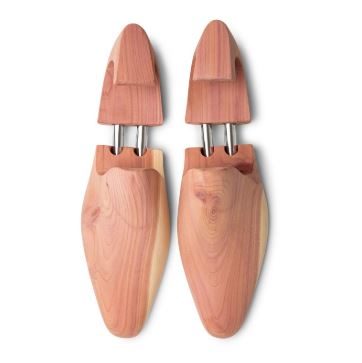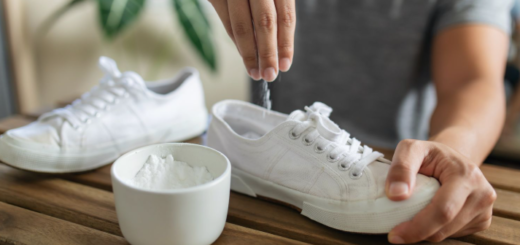Why Cedar Shoe Trees Are Essential: The Secret to Long-Lasting, Fresh-Looking Shoes
When it comes to shoe care, many overlook one of the simplest and most effective tools: shoe trees. While they may seem like an optional accessory, the truth is that a good pair of shoe trees can make a significant difference in maintaining the appearance and structure of your leather footwear. This is particularly important if you’ve invested in quality shoes that you want to keep in excellent condition for years to come.
Let’s explore why shoe trees—especially those made of cedar—should be a non-negotiable part of your shoe care routine, along with practical guidance on using and choosing them.

What Makes Shoe Trees So Important?
Footwear, especially leather shoes, is exposed to a lot during the day. As your feet sweat, the leather absorbs moisture, which can lead to warping, odor, and even damage to the interior lining and stitching. This is where shoe trees come in. Inserting them into your shoes after wearing helps preserve the original shape and prevents the formation of deep creases across the upper.
Moreover, shoe trees help draw out the moisture left behind from your feet. Without proper drying and reshaping, shoes can age rapidly, losing both comfort and aesthetic appeal. The right shoe trees actively assist in extending the life of your shoes.

Why Cedarwood Is the Preferred Material
While shoe trees can be made from plastic, beech, or other woods, cedar stands out for multiple reasons. Unfinished cedarwood naturally absorbs excess moisture from the inside of your shoes, reducing the risk of mildew and bacteria buildup. The fresh scent of cedar is also a natural deodorizer, which helps keep your shoes smelling pleasant.
Additionally, cedarwood contains oils that help combat bacteria and repel insects. This makes it a practical choice for those storing shoes for long periods. Unlike lacquered or polished wood, unfinished cedar remains breathable, which is key to effective moisture absorption.
Choosing Between Full and Travel Shoe Trees
Shoe trees come in different designs, and knowing the difference between them can help you choose the right type for your needs. A full-length cedar shoe tree, often featuring dual brass springs, is designed to fill the entire shoe cavity. This style is heavier—often around one kilogram per pair—and best suited for home use where portability isn’t a concern.
In contrast, lightweight travel models usually weigh around 200 grams and are easier to pack in a suitcase. They maintain the basic shape of the shoe while on the go but may not provide the same level of support or moisture control as full models. If you travel often and want to maintain your shoes in good condition, travel shoe trees are a worthwhile compromise.
How to Use Shoe Trees Properly
Timing is crucial when inserting shoe trees. The best time to place them in your shoes is immediately after wearing them. The leather is still warm and pliable at that point, which helps the shoe tree mold the interior back into shape more effectively. It also speeds up moisture absorption while minimizing the risk of permanent creases.
Try not to wear the same pair of shoes two days in a row. Rotating your footwear gives each pair enough time to rest and dry properly. This not only improves the life of the shoes but also keeps them smelling fresh. If your shoes have been exposed to rain or heavy moisture, it’s best to let them air out first—place them on their side to allow water to drain—then insert the shoe trees once most of the surface moisture has evaporated.

Simple Maintenance Tips for Lasting Benefits
Just like any quality tool, shoe trees also require minimal upkeep. To keep your cedar shoe trees effective, it’s advisable to sand them lightly once a year using fine-grit sandpaper (200 or higher). This rejuvenates the surface by removing any buildup and exposing more of the natural wood fibers, enhancing both their moisture-wicking properties and fresh scent.
Also, inspect your shoe trees for any signs of cracking or wear. While they’re durable, replacing them when necessary ensures you continue to get the best care for your shoes.
Why Skipping Shoe Trees Can Cost You
Neglecting shoe trees might not cause immediate harm, but over time, the effects become visible. Leather shoes without proper support are prone to collapsing at the heel or developing deep creases across the vamp. Once that happens, no amount of polish or conditioning can restore their original shape.
Additionally, odor and moisture trapped inside shoes without a proper drying method can lead to bacteria buildup. This not only affects the shoe but also your feet. In contrast, a pair of high-quality cedar shoe trees can help eliminate these issues before they start.
Conclusion: A Simple Investment for Long-Term Gains
Using shoe trees may seem like a minor detail in your shoe care routine, but their benefits are hard to overstate. Whether it’s protecting the leather, preserving the shape, or keeping your footwear fresh and odor-free, shoe trees play an essential role in maintaining quality shoes.
Opt for natural cedar models if possible—they offer superior performance and longevity compared to alternatives. Whether you’re keeping your shoes at home or on the road, there’s a shoe tree to match your lifestyle. When used correctly, they don’t just protect your shoes—they enhance the entire wearing experience.







